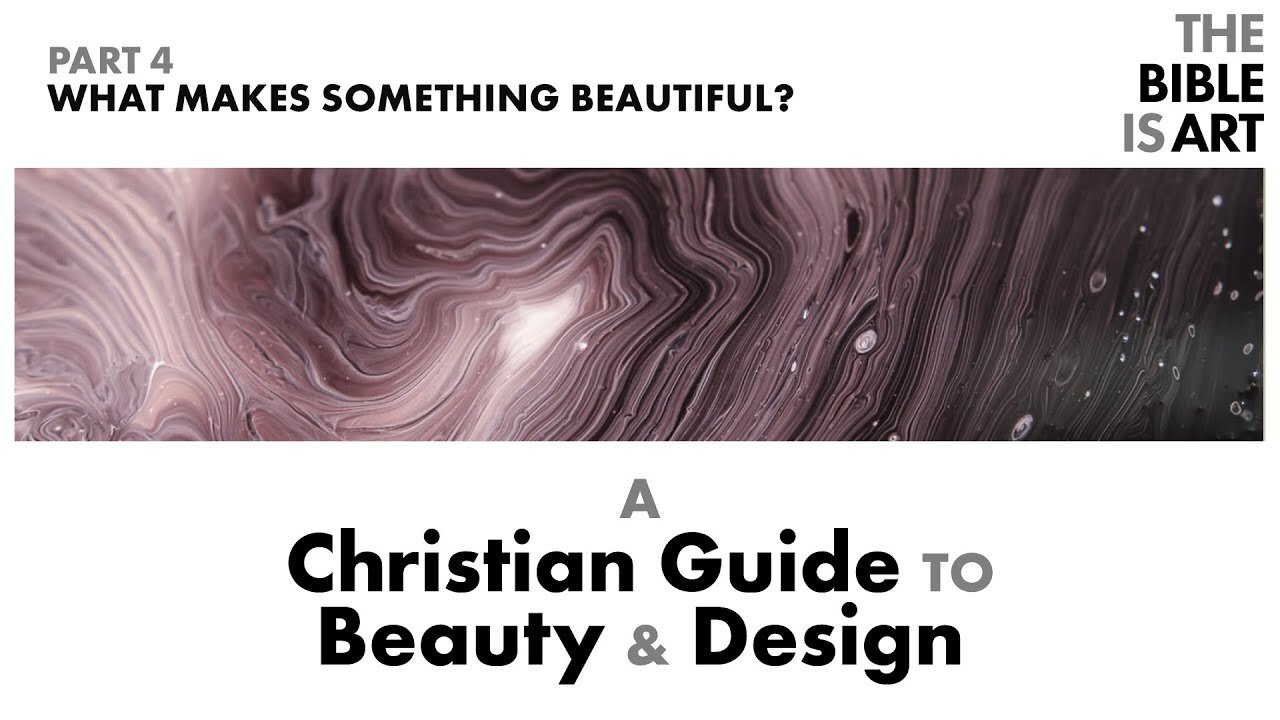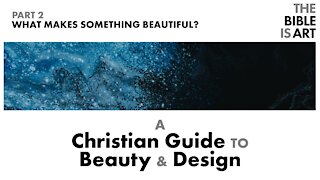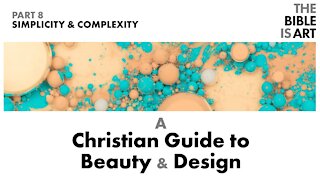Premium Only Content

What Makes Something Beautiful? | A Christian Guide to Beauty and Design | Part 4
In this video we look at the fundamental properties of beauty.
Support the Channel: https://www.patreon.com/thebibleisart
Website: https://www.thebibleisart.com
Email: thisdivineart@gmail.com
Twitter: @johnbhiggins
| Best Books on How to Learn to Read the Bible as Literary Art |
Reading Biblical Narrative: An Introductory Guide (https://amzn.to/30LzaRa)
Narrative Art in the Bible (https://amzn.to/30RVGIb)
The Art of Biblical Narrative (https://amzn.to/3aDrIfk)
Old Testament Narrative: A Guide to Interpretation (https://amzn.to/38rcE2C)
The Poetics of Biblical Narrative (https://amzn.to/2Gh4cqE)
| Transcription |
Welcome back to the Bible is Art where we are currently in a series on a Christian Guide to Beauty and Design. If you haven’t seen the videos up to now I would recommend you watch those before you watch this. But if you’re ready to move on, today, we’re talking about the properties of, or, what makes something beautiful.
One of the things that I’ve disliked in many aesthetics books is how long it takes to get to any punchline, any insight into beauty, so let’s just list the fundamental properties of beauty we will be talking about right at the beginning. Something is beautiful when it has the following properties: unity, diversity, hierarchy, layers, balance, and form.
Now this is certainly not an exhaustive list but it is necessary. Beauty is deep and mysterious and we can never comprehensively understand its nature, but that doesn’t mean that we cannot truly understand its nature. Just because I cannot know all things about prime numbers does not mean that I can’t know some things about prime numbers. Skin is also mysterious and deep. We know that skin is made up of cells and chemicals, and the fact that we do not know the smallest particles that make up the parts of skin does not negate our knowledge that it is made up of cells and chemicals. So there’s much more to beauty, but these are some of the fundamental properties of beauty.
In this video, I want to briefly review each of these properties of beauty because we will have videos on each one of them individually. But before we look at each of these properties you might be thinking, “wait, this seems kind of mundane, or matter of fact. How do you know that these are properties of beautiful things“?
Well, one of the hazards of giving the punchline in the beginning is that you don’t get to set up the joke, I’m giving you the assertion before the argument. So the justification is coming. But if you haven’t seen the first video, I recommend you watch that because I deal with that question there. But a quick and dirty answer is the following.
We know anything from four sources, revelation, reason, tradition/history, and experience. So just telling you some of the foundational properties of beauty is the same thing as if you were to ask me what water is made out of and I replied two hydrogens in an oxygen, A simple answer but it took a very long time, and a lot of hard fall to get there, scientists observing, thinking and testing. But now, to the nature, the properties of beauty
Unity and diversity - these are the two most fundamental aesthetic properties. From the beginning of the artistic task you start with unity, a blank page, and your next task is to diversify adding an element in addition to the white page. And as you keep adding new elements you cannot add them indiscriminately. You must add them in a way that retains unity. I have a principal I use when I’m evaluating a piece of design that comes on my desk. And you can get at this principle by asking if the design is confusing or boring? If it is confusing, then there is not enough unity, and if it’s boring, there’s not enough diversity. This is because if it is confusing there are not enough visual features to give the piece a harmonious unity. If it is boring, there is not enough visual information to make it interesting, giving the viewer more and different things to look at. Furthermore, this principle of unity and diversity is not just an aesthetically fundamental principle, but philosophically and theologically as well. It is fascinating that one of the earliest philosophy questions was regarding the one and the many, how there can be unity and diversity. So also one of the first theological questions of the church was how God can be a unity and plurality, how there can be one and three.
Hierarchy - Once you start adding things, words, images, shapes, to a blank page, increasing the diversity, in order for it to not be chaotic, there must be a hierarchy. If there are, for instance, three objects, most of the time there will be 1 that is most important, and that needs to be indicated visually. If there is no hierarchy established, people will not know where to look and where to look first. A good designer leads the viewers through the work, visually indicating the hierarchy.
-
 9:24
9:24
thebibleisart
3 years agoWhat Makes Something Beautiful? | A Christian Guide to Beauty and Design | Part 3
102 -
 13:00
13:00
thebibleisart
3 years agoHierarchy | A Christian Guide to Beauty and Design | Part 6
66 -
 4:00
4:00
thebibleisart
3 years agoIntroduction | A Christian Guide to Beauty and Design | Part 1
114 -
 11:08
11:08
thebibleisart
3 years agoForm | A Christian Guide to Beauty and Design | Part 7
246 -
 14:26
14:26
thebibleisart
3 years agoSimplicity and Complexity | A Christian Guide to Beauty and Design | Part 8
73 -
 7:14
7:14
thebibleisart
3 years agoThe Objectivity of Beauty | A Christian Guide to Beauty and Design | Part 2
167 -
 0:19
0:19
usahilpk
3 years agoBeautiful butterfly 🦋 Amazing Beauty
1551 -
 1:29:55
1:29:55
WickedVirtue
6 hours agoLate Night Fortnite w/ Friends
50.9K -
 3:34:06
3:34:06
This is the Ray Gaming
7 hours ago $1.07 earnedCould you be? Would you be? Won't you be my RAYBOR? | Rumble Premium Creator
30.9K -
 1:46:52
1:46:52
JahBlessGames
8 hours ago🎉Come een' and come tru' - VIBES | MUSIC | GAMES
52.3K2